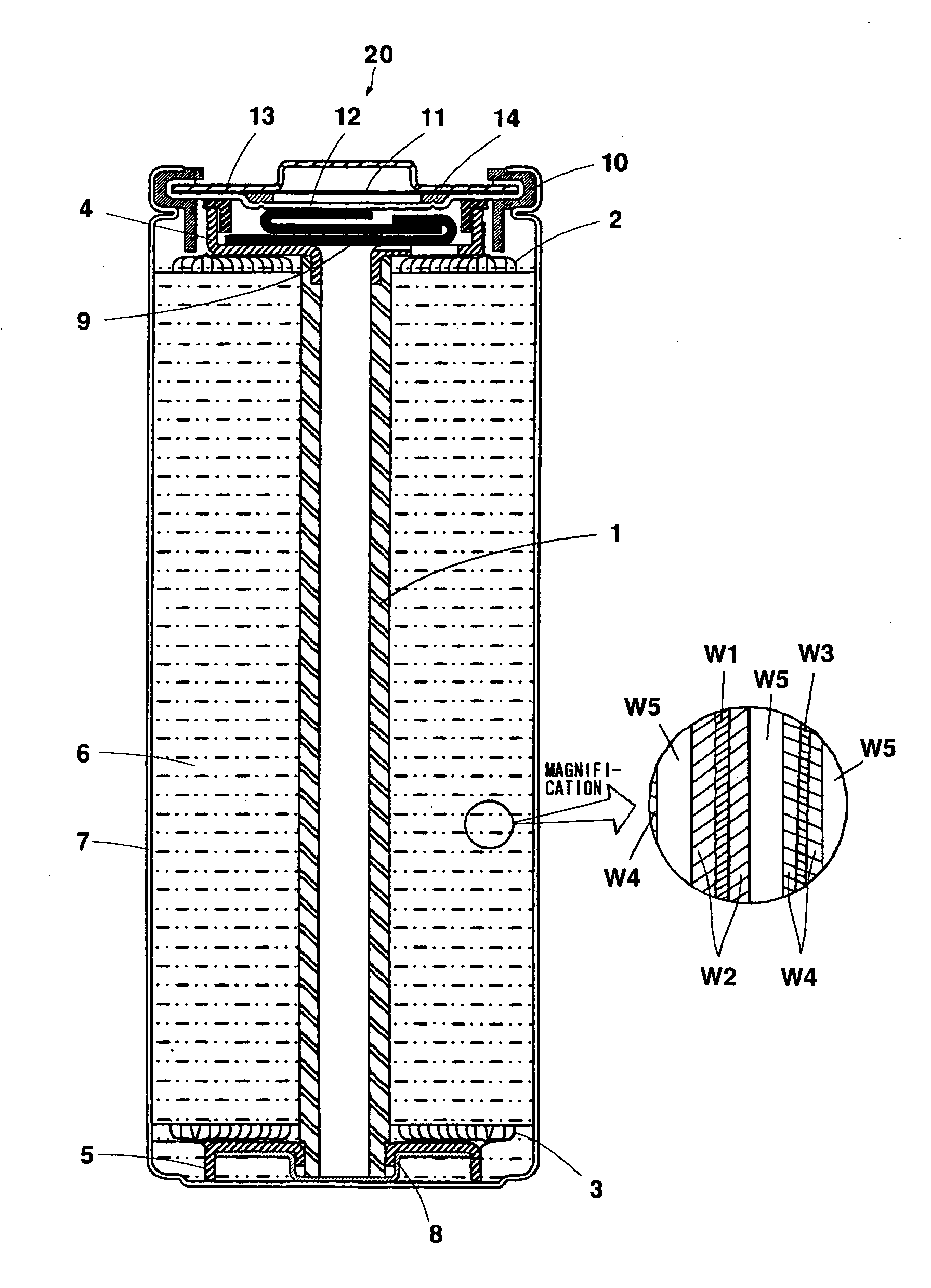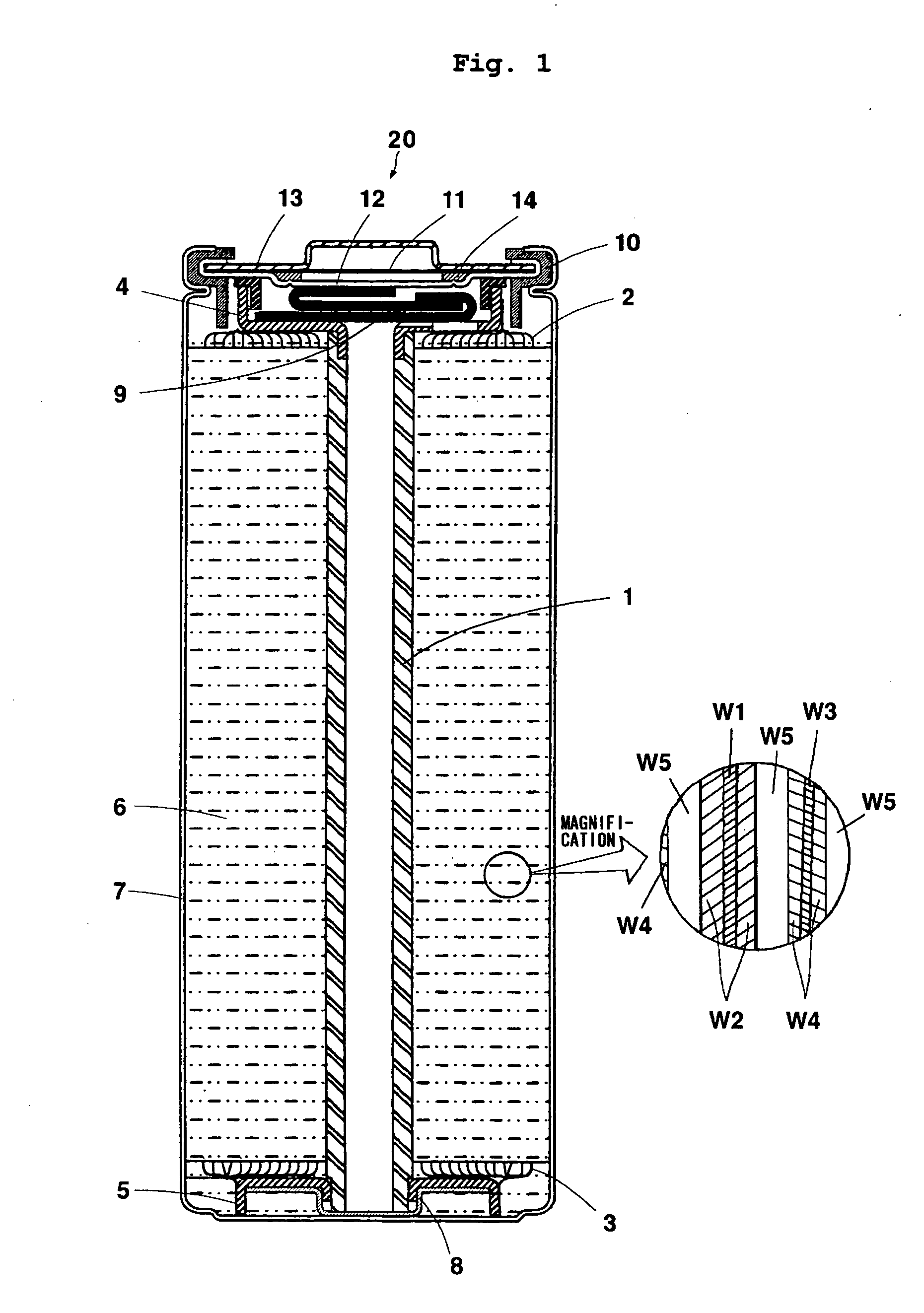Positive electrode active material, non-aqueous electrolyte secondary battery and method for manufacturing positive electrode active material
a technology of non-aqueous electrolyte secondary batteries and active materials, which is applied in the direction of cell components, electrochemical generators, and nickel compounds, can solve the problems of limited foreign metal reduction and battery performance drop, and achieve the effect of increasing internal resistan
- Summary
- Abstract
- Description
- Claims
- Application Information
AI Technical Summary
Benefits of technology
Problems solved by technology
Method used
Image
Examples
example 1
[0042] As shown in the following Table 1, in Example 1, lithium cobaltate (LiCoO2) was used for the lithium transition metal complex oxide. One kind among the oxides of 14 kinds ((1) to (14)) was used for the oxide X. The positive electrode active material was prepared by the lithium cobaltate and the oxide X according to Method A. The intermixture amount of the oxide X was set to 5 / 1000. Incidentally, a commercial product having a grade of chemical reagent was used for the oxide X. Further, in Table 1, lithium cobaltate in parentheses among lithium transition metal complex oxides shows that it was formed by sintering the mixture of lithium carbonate, cobalt oxide and the oxide X.
TABLE 1Lithium TransitionIntermixtureMetal Complex OxideAmountMethodExample 1LiCoO25 / 1000AExample 2LiCoO21 / 1000AExample 3LiCoO20.1 / 1000 AExample 4(LiCoO2)5 / 1000BExample 5(LiCoO2)1 / 1000BExample 6LiCoO21 / 1000CExample 7LiMn2O41 / 1000CExample 8LiMn0.4Co0.2Ni0.4O21 / 1000CExample 9LiMn0.5Ni0.5O21 / 1000CControl 1L...
examples 2 and 3
[0043] As shown in Table 1, in Example 2 and Example 3, batteries were manufactured in the same manner as Example 1 except the intermixture amount of the oxide X. The intermixture amount was set to 1 / 1000 in Example 2, and it was set to 0.1 / 1000 in Example 3.
example 4
[0044] As shown in Table 1, in Example 4, the positive electrode active material was prepared by Method B. After mixing lithium carbonate and cobalt oxide (CO3O4) sufficiently such that the atom ratio of lithium and cobalt (Li / Co) was set to 1, one kind of the following dissimilar elements and the alloy of the dissimilar elements was mixed sufficiently so that the intermixture amount was set to 5 / 1000, then the mixture was sintered. (1) Aluminum, (2) silicon, (3) titanium, (4) vanadium, (5) chromium, (6) iron, (7) nickel, (8) copper, (9) zinc, (10) zirconium, (11) molybdenum, (12) tungsten, (13) lead and (14) austenitic stainless steel (the alloy of iron-chromium (18%)-nickel (8%)) were used for the dissimilar elements and the alloy of the dissimilar elements. The positive electrode thus obtained was confirmed as lithium cobaltate (LiCoO2) according to the results of X-ray diffraction.
PUM
| Property | Measurement | Unit |
|---|---|---|
| height | aaaaa | aaaaa |
| diameter | aaaaa | aaaaa |
| battery capacity | aaaaa | aaaaa |
Abstract
Description
Claims
Application Information
 Login to View More
Login to View More - R&D
- Intellectual Property
- Life Sciences
- Materials
- Tech Scout
- Unparalleled Data Quality
- Higher Quality Content
- 60% Fewer Hallucinations
Browse by: Latest US Patents, China's latest patents, Technical Efficacy Thesaurus, Application Domain, Technology Topic, Popular Technical Reports.
© 2025 PatSnap. All rights reserved.Legal|Privacy policy|Modern Slavery Act Transparency Statement|Sitemap|About US| Contact US: help@patsnap.com


